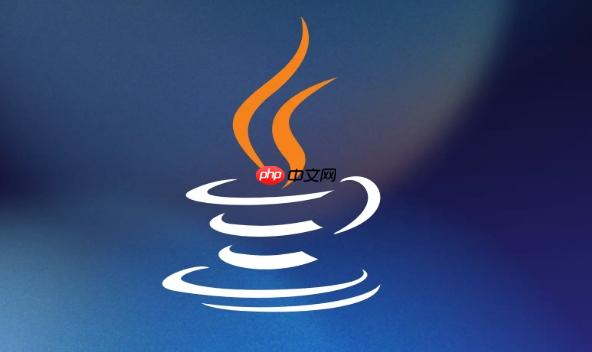使用CompletableFuture结合ExecutorService按组并行执行任务,先将任务按groupId分组到Map中,再对每组提交异步任务并等待全部完成。

在Java中实现并发任务分组执行,关键在于将任务按组划分,并确保每组任务可以并行执行,同时组与组之间可控制执行顺序或并发级别。常用的方式是结合ExecutorService、CompletableFuture和集合分组逻辑来完成。
通过CompletableFuture可以方便地对每组任务进行异步执行,并等待整组完成。
示例场景:假设有多个任务,需要按类别(如用户ID分组)分别执行,每组内部任务并行,组间也可并行。
CompletableFuture,内部使用线程池并行处理该组所有任务join()等待全部完成代码示例:
立即学习“Java免费学习笔记(深入)”;
Map<String, List<Runnable>> groupedTasks = // 按组分类的任务
ExecutorService groupPool = Executors.newFixedThreadPool(4);
List<CompletableFuture<Void>> groupFutures = new ArrayList<>();
for (Map.Entry<String, List<Runnable>> entry : groupedTasks.entrySet()) {
String groupId = entry.getKey();
List<Runnable> tasks = entry.getValue();
CompletableFuture<Void> groupFuture = CompletableFuture.runAsync(() -> {
ExecutorService taskPool = Executors.newFixedThreadPool(2); // 每组内并发度
List<CompletableFuture<Void>> taskFutures = tasks.stream()
.map(task -> CompletableFuture.runAsync(task, taskPool))
.collect(Collectors.toList());
// 等待本组所有任务完成
CompletableFuture.allOf(taskFutures.toArray(new CompletableFuture[0])).join();
taskPool.shutdown();
}, groupPool);
groupFutures.add(groupFuture);
}
// 等待所有组执行完毕
CompletableFuture.allOf(groupFutures.toArray(new CompletableFuture[0])).join();
groupPool.shutdown();
如果要求组之间按顺序执行,可以不用并行流,而是逐个处理每组:
LinkedHashMap)future.get()同步等待这样就能实现“组内并行、组间串行”。
若不使用CompletableFuture,也可以用CountDownLatch手动控制同步。
为每组创建一个latch,初始值为任务数,每个任务完成后countDown,主线程await。
适合更底层控制场景,但代码较繁琐,推荐优先使用CompletableFuture。
线程池管理:避免频繁创建过多线程池,建议复用或使用共享池。
异常处理:CompletableFuture中任务抛异常不会中断主流程,需调用exceptionally()或检查get()结果。
资源释放:务必调用shutdown()关闭线程池,防止内存泄漏。
基本上就这些。根据实际需求选择组内并行、组间并行或串行策略,CompletableFuture配合分组map是最清晰实用的方式。
以上就是在Java中如何实现并发任务分组执行的详细内容,更多请关注php中文网其它相关文章!

每个人都需要一台速度更快、更稳定的 PC。随着时间的推移,垃圾文件、旧注册表数据和不必要的后台进程会占用资源并降低性能。幸运的是,许多工具可以让 Windows 保持平稳运行。

Copyright 2014-2025 https://www.php.cn/ All Rights Reserved | php.cn | 湘ICP备2023035733号